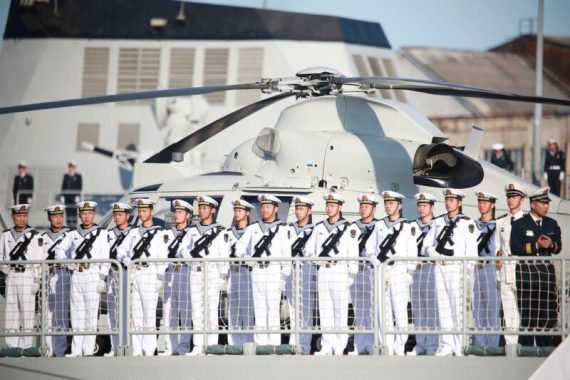C
hina has been increasing its naval presence in the Middle East to secure its energy supplies and gain strategic advantage. Beijing claims that its naval operations focus on maintaining regional stability and combating piracy. However, China’s actions have drawn international attention and sparked discussions about its long-term goals in the Middle East.
A recent report revealed that the Chinese navy, the People’s Liberation Army Naval Forces (PLAN), has the largest number of naval ships in the world. The navy is composed of approximately 300,000 soldiers that are divided into three fleets: North, East, and South. The PLAN’s fleet comprises 777 vessels, including two aircraft carriers, 79 submarines, and 41 destroyers.
China’s Belt and Road Initiative: A strategic expansion of naval power
China’s Belt and Road Initiative (BRI) has become a critical tool for projecting naval power in the Middle East. The BRI aims to build infrastructure and increase connectivity across Asia, Europe, and Africa, passing through the Middle East.
The BRI has facilitated China’s naval expansion by allowing it to build and operate ports in Pakistan and Djibouti, providing Beijing with strategic footholds. Additionally, the BRI has enabled China to invest in regional infrastructure projects, such as railways and pipelines, further strengthening its influence and economic ties in the Middle East.
China’s joint naval drills with Iran and Russia
Beijing, Tehran, and Moscow conducted a joint military maritime exercise named “Security Belt-2023” in the Gulf of Oman. The naval drills were conducted on March 15-19 to promote security and peace. The military drills involved, among others, maritime shooting, joint search and rescue, communications, counterterrorism, and counter-piracy operations. The three countries conducted similar joint military drills in 2019 and 2022.
According to the Chinese Ministry of National Defense, the Chinese PLAN Navy’s guided missile destroyer Nanning joined the joint maritime exercise and returned to its naval escort mission after leaving Port Chabahar in Iran.
As reported by U.S. news channel Fox News, the U.S. sees this cooperation as China’s growing ambition to access hydrocarbon and energy in the Middle East.
John Kirby, spokesperson for the U.S. National Security Council, said that the White House was not worried about the joint exercise, and it was not the first instance that the Russians and Chinese conducted joint training.
China’s strategy in the Middle East
China’s increasing presence in the Middle East has significant implications for the region’s political landscape and global affairs, potentially impacting regional stability and security. China’s role in brokering a détente between Iran and Saudi Arabia is clear evidence of its growing diplomatic weight in the region.
On March 15, 2023, Wang Di, the director-general of the Department of West Asian and North African Affairs of China’s Foreign Ministry, discussed China’s strategy towards the Middle East. He highlighted China’s support of Middle Eastern nations’ strategic autonomy, solidarity, and cooperation. Wang Di also emphasized China’s “responsible and constructive role” in promoting peace and stability.
Recommended
U.S. response to China’s growing naval power
The joint drills show that China is expanding its regional reach and seeking to establish a more significant military presence.
According to a report by the Washington Institute for Near East Policy, “China’s growing naval presence in the Middle East is part of a broader global strategy aimed at challenging U.S. dominance and expanding Chinese influence.” The report further notes that “China’s naval expansion in the region is likely to increase tensions and could even spark a conflict.”
Bejing’s naval power in the Middle East is becoming a topic of concern for regional powers. China’s BRI has provided it with the means to expand its naval power by building and operating ports in the region, and investing in infrastructure projects that further its economic ties and influence.





